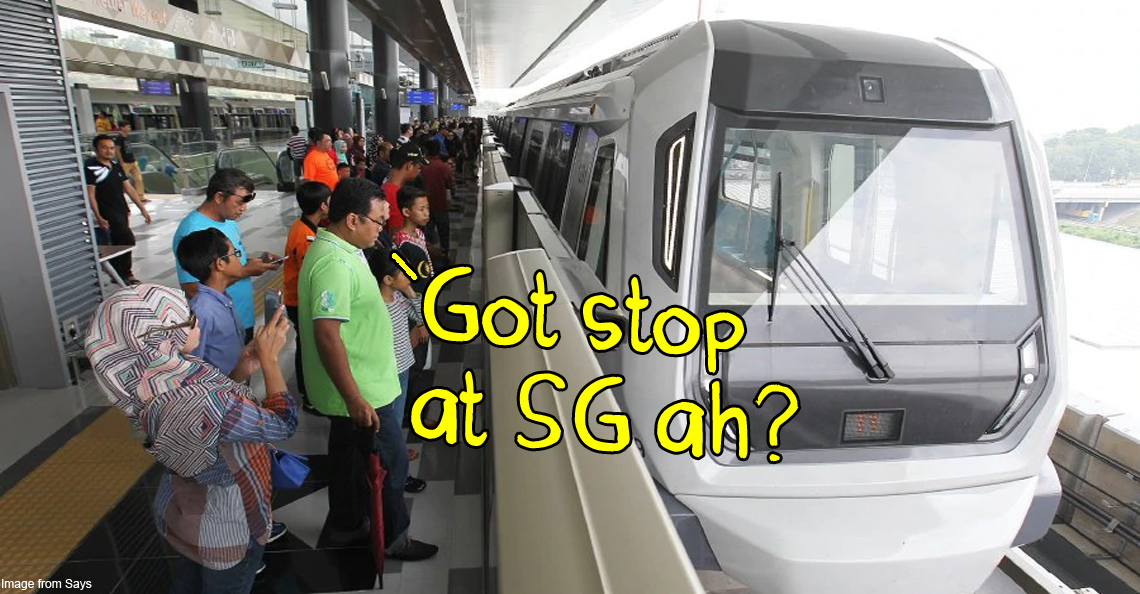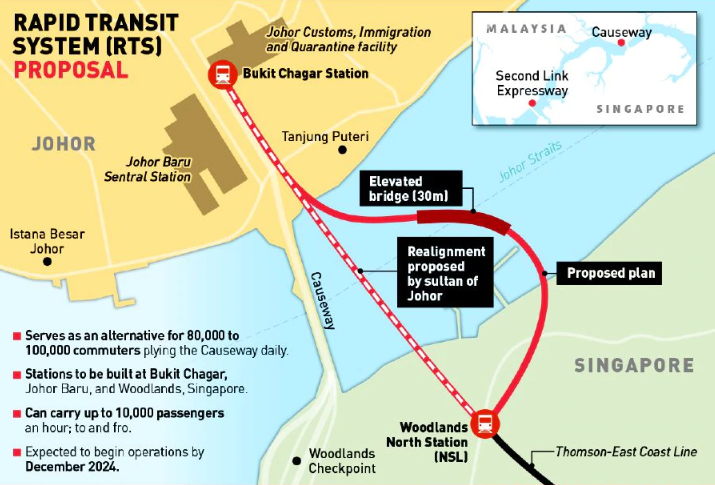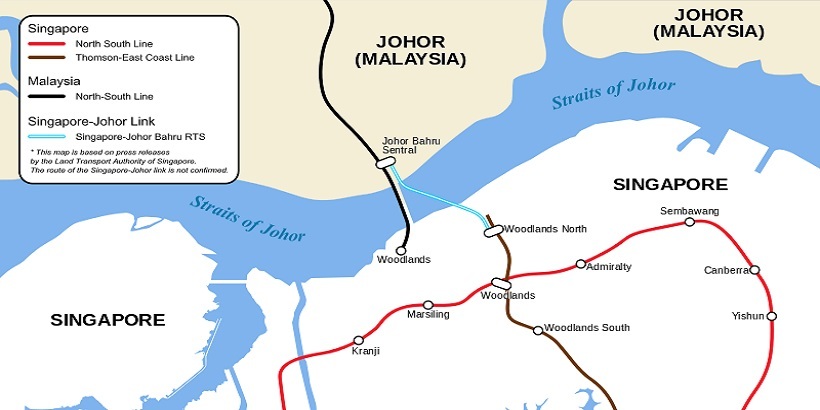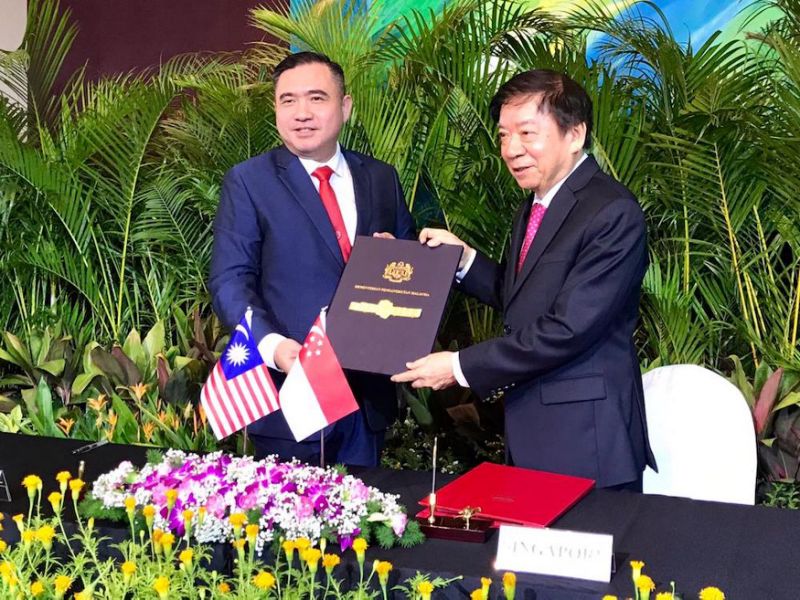Another railway to Singapore might be cancelled. And its gonna cost us.

- 204Shares
- Facebook137
- Twitter15
- LinkedIn13
- Email15
- WhatsApp24
‘Just a small town girl, living in a lonely world. She took the midnight train going anywhere…’
If you don’t know that song, you’re too young. But on a serious note, we brought that song up cos we’re talking railways today, or more specifically, the Johor Bahru-Singapore Rapid Transit System, or RTS for short.
The RTS project has its origins in a 2010 agreement between Singapore and Malaysia, but was recently back in the news again following a multitude of events and reports this month, such as the revelation that land meant for the RTS project somehow ended up being owned by the Johor Sultan, plus further news that Malaysia will be paying Singapore RM2 million(!) so that the RTS won’t have to be built.
Wait, what?!

We’ll get to all the weird issues plaguing the RTS in just a sec, cos seeing as Cilisos cheonghei as usual #ihatecilisos, it’s perhaps best to first give a quick summary of what the RTS is in the first place.
The RTS was meant to solve Causeway traffic and replace the KTMB
While the RTS only became an official plan in 2010, when Singapore was designing their MRT lines in the early 90s, they made it so that an extension to Malaysia would be possible in the future, with both countries informally agreeing to it.
It would however take almost two decades for anything to happen, with the 2010 agreement kicking things off. The RTS was meant to be operational by 2018, but a bunch of unforeseen circumstances would move the date to 2024. It would use the MRT cars and systems from Singapore’s own Thomson East Coast Line MRT, allowing for an interchange station at Woodlands. Malaysia meanwhile would base their end of the line at Bukit Chagar, Johor.
By July 2017, a plan had been set in place, with the RTS route having a 25m high bridge that curves over the Johor Straits. This however irked the Sultan of Johor Ibrahim Ismail, who didn’t like the design and was worried about the bridge ruining the skyline of the city.

“It disrupts the city skyline, and we are talking about a permanent fixture here. Go back to the drawing board and review the overall plan,” – Sultan Ibrahim Ismail, as quoted by Malaysiakini
Eventually tho, the Sultan approved of a new RTS route, with the railway now looking a bit like this:

And with the Sultan pretty much on board with the plan, in January 2018, Singapore and Malaysia would sign a bilateral agreement for the RTS project.
“We have signed the Bilateral Agreement for the RTS Link. It is an important long-term cross-border project. When completed in 2024, it will benefit thousands of daily commuters and reduce Causeway congestion…. The RTS Link will replace the KTMB link to Woodlands when it becomes operational… The enhanced connectivity will also boost economic cooperation in Iskandar Malaysia,” – Singapore PM Lee Hsien Loong, January 2018, as quoted from the Singapore PMO
But the Sultan’s involvement with the RTS project didn’t end there. Earlier this year, it was revealed that following the agreement of the new route, a piece of land meant for the RTS project ended up being transferred to the Johor ruler. However, it was quickly settled when the monarch said he was willing to let it go for free if it means lowering the RTS project cost.
So means all good dy right? All can right? Settle dah kan? Well, let’s just say the project has run into a couple of railblocks.

The RTS has been suspended for now, but will still cost Malaysia money
In a press conference on 21 May, Transport Minister Anthony Loke and his Singaporean counterpart Khaw Boon Wan announced that, following a request by the Malaysian govt, the RTS link project will be suspended for six months. According to Loke, this is so that Malaysia can use this time to rethink and renegotiate parts of the RTS deal.

“The (suspension) agreement will allow us some time to explore other affordable and sustainable solutions to address traffic congestion at the border. These include new initiatives, such as improvements to the physical infrastructure at the border, a review of inter-boundary policies and regulations, and enhancing the quality of cross-border services,” – Anthony Loke, as quoted by Malaysiakini
As part of the suspension agreement, Malaysia will also have to pay another RM2 million to Singapore in ‘abortive costs’. Basically, kinda like how you pay a cancellation fee when you potong your telephone line, the Malaysian govt will have until July 30 to pay these abortive fees to Singapore so that they can suspend the RTS project. And that’s not all either; in the event Malaysia ends up pulling out of the RTS Link project altogether, we’ll have to pay even more in cancellation fees.

Of course, there are reasons behind Malaysia’s move to suspend it. Loke claims that the original fare structure priced the tickets at RM15 for a one-way ticket, which he feels was quite high and would have been a burden to Malaysians who commute to Singapore for work daily. Furthermore, this move will also allow the govt to look at other possible financing options for the RTS project, with Loke revealing that they hope it would be handled by the private sector rather than Prasarana.
“We have taken this approach to renegotiate the project because we believe it can be done at a more effective cost, and we also hope that the cost will be undertaken by private parties…. Prasarana was supposed to bear the construction costs…. But we now hope that private parties will bear the construction costs and even operate it,” – Anthony Loke, as quoted by Malaysiakini
Not everyone is a fan of the plans for privatisation tho. One such critic is former PM Najib Razak (heard of him?) who called the plans a way to give current govt cronies profit for decades.
His reasoning is that because there would be hundreds of RTS users everyday, there’s an incredible amount of profit to be made from the RTS project, which is why both Singapore and Malaysia originally planned for GLCs to be in charge. But with privatisation plans in place, Harapan, according to Najib, is setting up their cronies to profit from the project for decades, eventho it’s a public works project that should be meant for the people.
In any case, it does seem as tho most of the parties involved do want the project to continue. And why wouldn’t they want to? Just take a look at the Causeway and Second Link’s constant traffic jams. That doesn’t mean there should be more bridges tho; a transportation expert recently argued that there’s a serious need for more crossborder mass transit options (like you know, the RTS) and that the current option of the KTM rail line was underutilised and not used to its full potential.
The Johor MB Datuk Dr Sahruddin Jamal has also come out to state his support of the RTS project being completed, saying:
“We are aware (of Malaysia-Singapore agreement to suspend the project), but the hope in Johor is that the RTS project will be continued… because many Johor people travel daily to work in Singapore. So, it’s our hope,” – Datuk Dr Sahruddin Jamal, Johor MB, as quoted by The Sun
As for now, the RTS deal remains in a limbo of sorts, suspended until further notice. And while you could understand the reasoning behind Loke’s call to renegotiate the RTS project, extra options for the people to use to commute would never be a bad thing. We guess we’ll just have to wait for the six months to pass before finding out the fate of the RTS deal.
- 204Shares
- Facebook137
- Twitter15
- LinkedIn13
- Email15
- WhatsApp24



